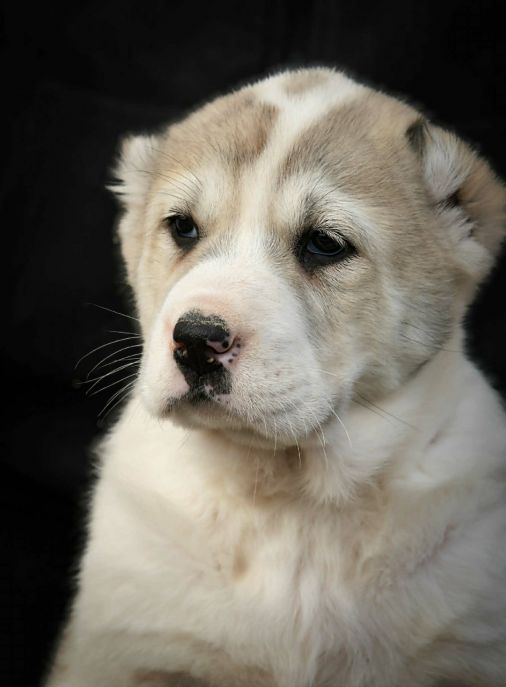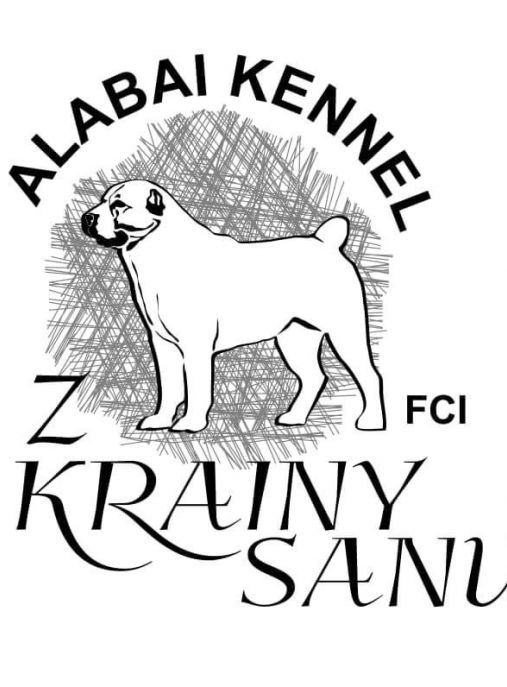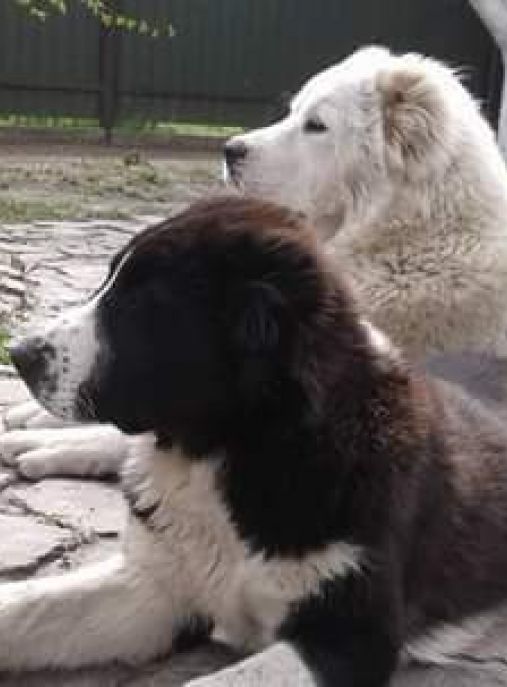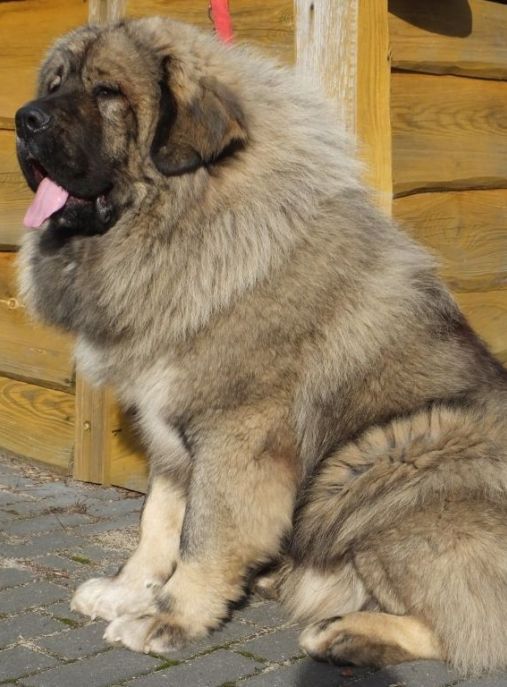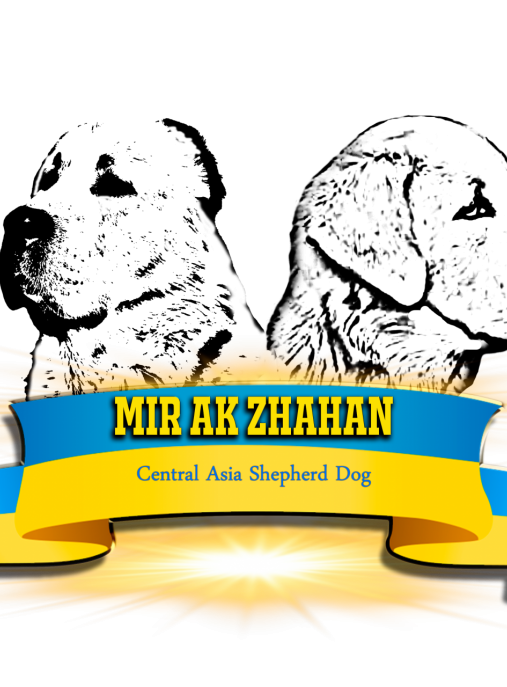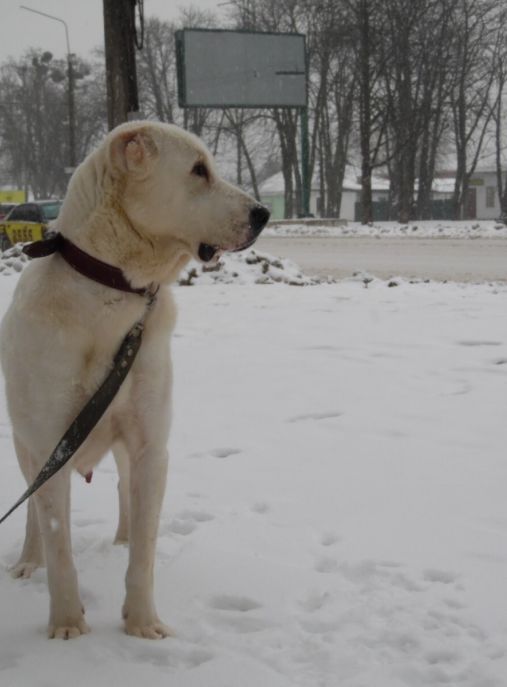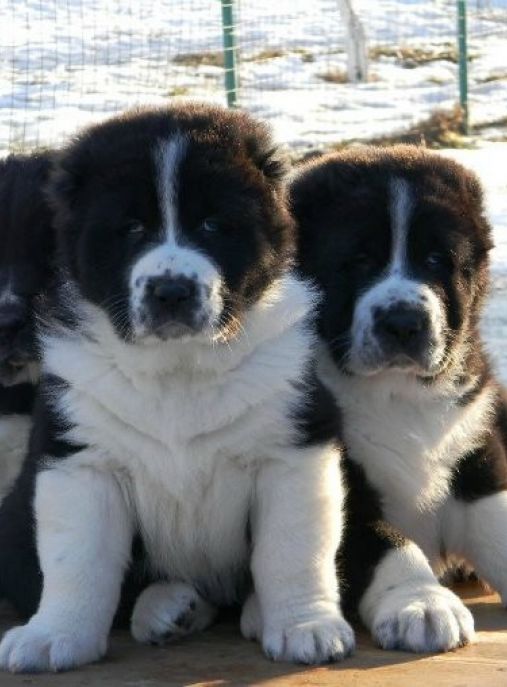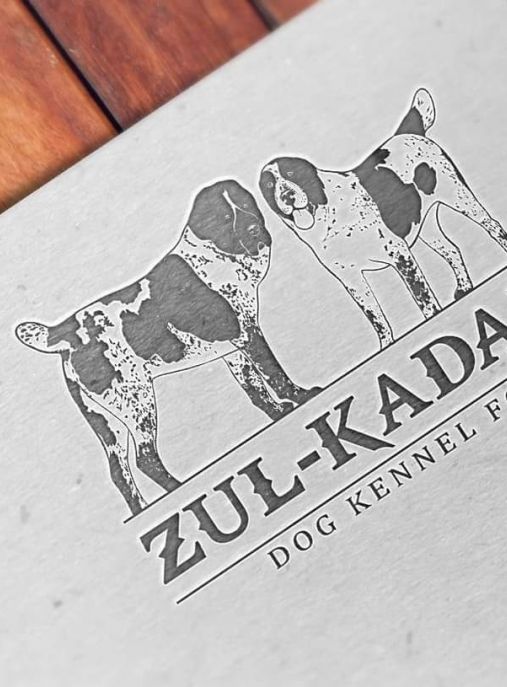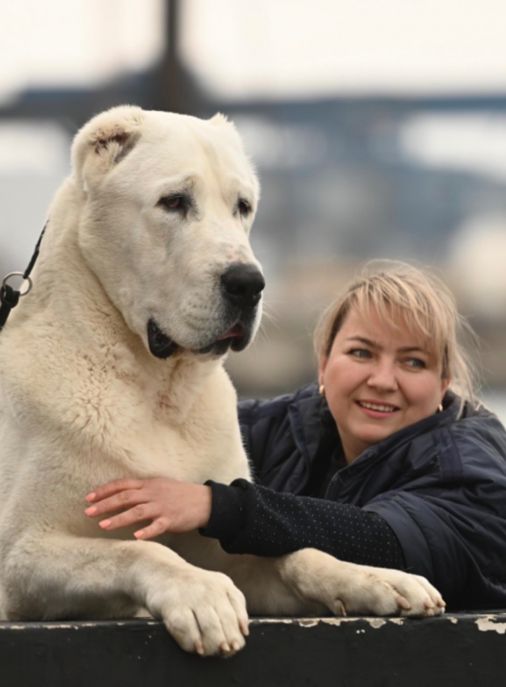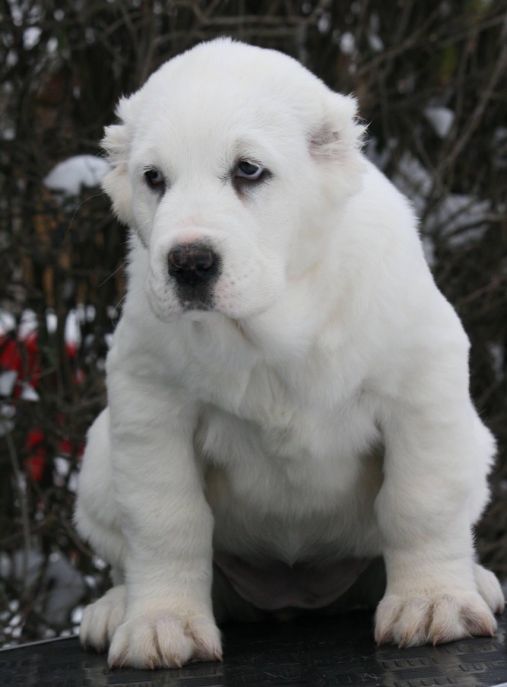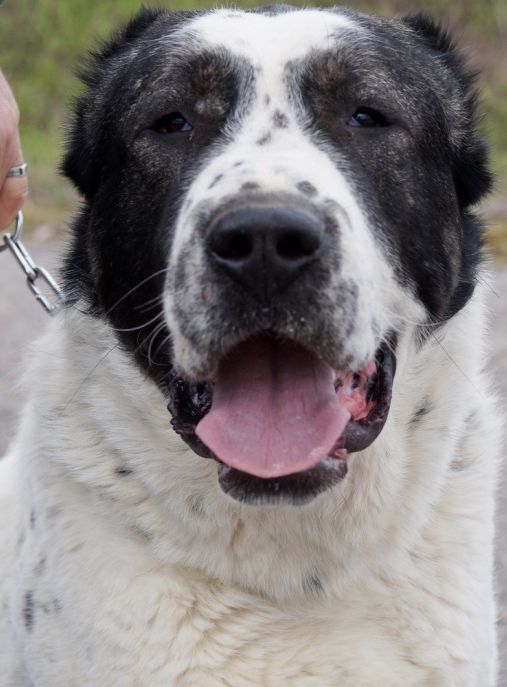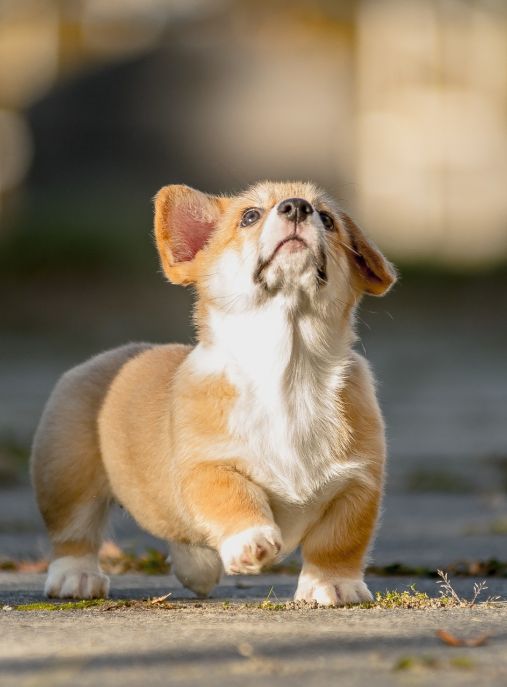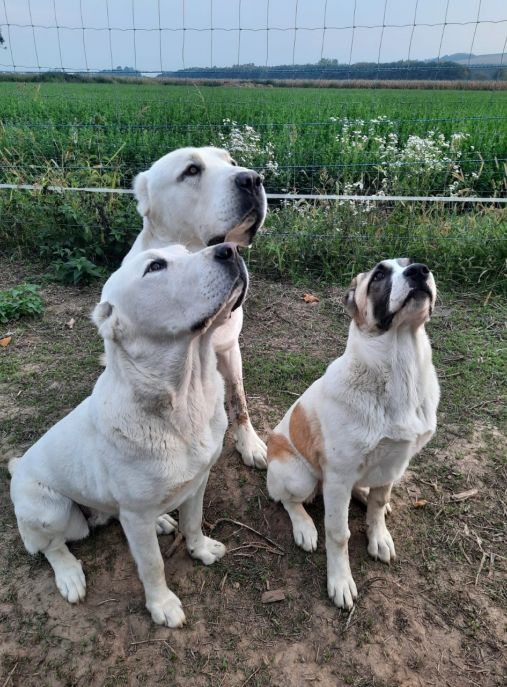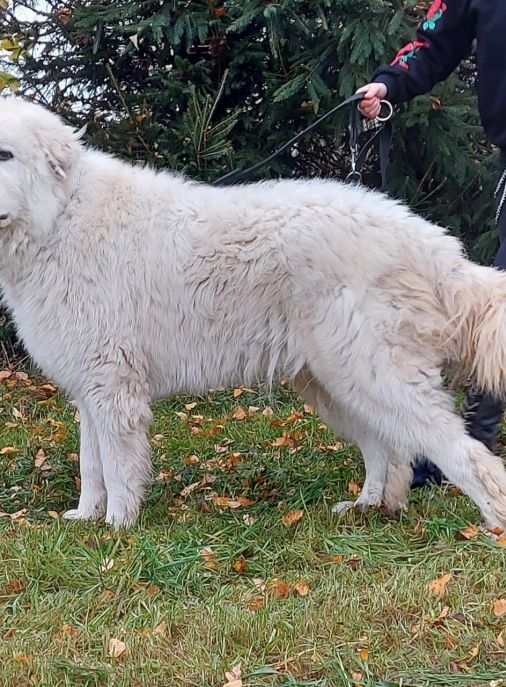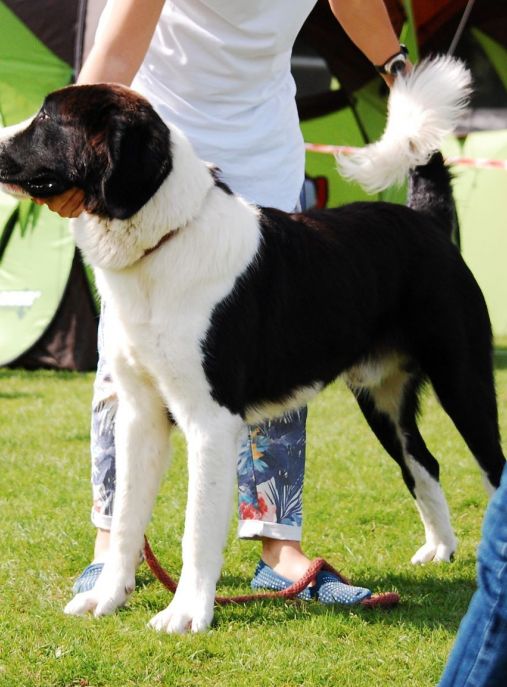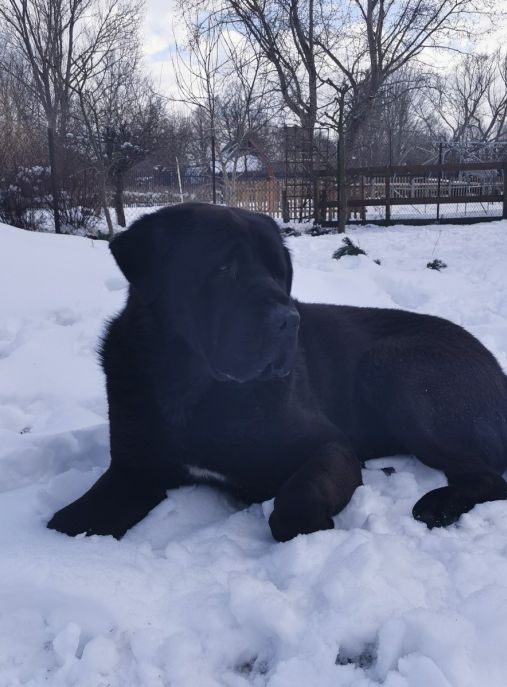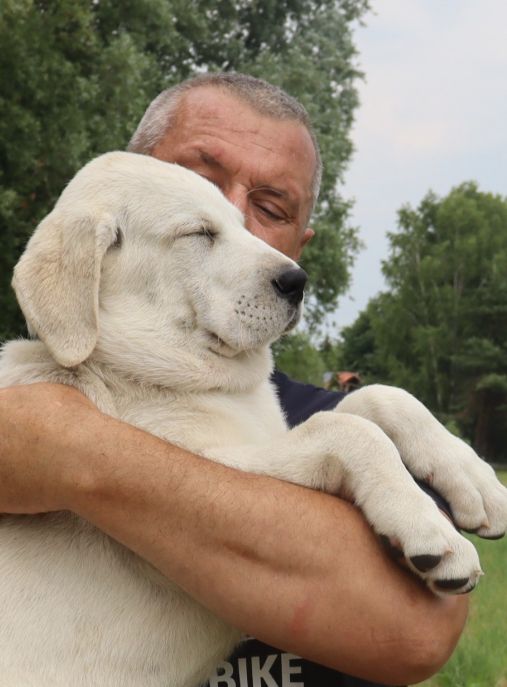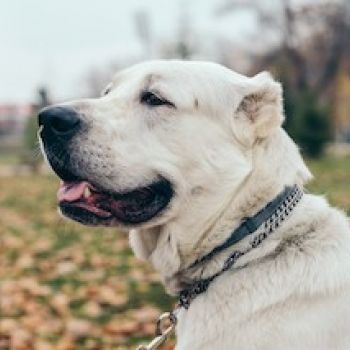The Central Asia Shepherd Dog, also known as the Central Asian Ovcharka, is a majestic and powerful breed that hails from the vast and rugged landscapes of Central Asia. This breed is renowned for its exceptional guarding abilities, unwavering loyalty, and impressive physical stature. With a rich history and a distinct set of characteristics, the Central Asia Shepherd Dog has become a beloved breed for many dog enthusiasts around the world.
Originating from the ancient Molosser dogs, the Central Asia Shepherd Dog has a history that dates back thousands of years. These dogs were primarily bred by nomadic tribes in Central Asia, including Kazakhstan, Turkmenistan, Uzbekistan, Tajikistan, and Kyrgyzstan. They were primarily used to protect livestock from predators, such as wolves and bears, and to guard the nomads' camps and possessions.
According to the FCI (Fédération Cynologique Internationale) typology, the Central Asia Shepherd Dog belongs to Group 2, Section 2.2, which includes Molossoid breeds. These breeds are characterized by their large size, muscular build, and protective instincts. The Central Asia Shepherd Dog is also recognized by other kennel clubs, such as the American Kennel Club (AKC) and the United Kennel Club (UKC).
The Central Asia Shepherd Dog is primarily bred for guarding and protection purposes. They are well-suited for guarding livestock, such as sheep, goats, and cattle, as well as protecting their owners and their properties. Due to their strong protective instincts, they are not recommended for novice dog owners or families with small children. These dogs require experienced handlers who can provide them with proper training, socialization, and a firm but fair leadership.
In terms of physical characteristics, the Central Asia Shepherd Dog is a large and robust breed. Males typically weigh between 110 to 170 pounds (50 to 77 kilograms), while females weigh slightly less, ranging from 90 to 140 pounds (41 to 64 kilograms). Their height at the shoulder can range from 25 to 32 inches (64 to 81 centimeters). These dogs have a well-muscled body, a broad head, and a thick double coat that provides insulation and protection from the harsh climates of Central Asia.
The life expectancy of the Central Asia Shepherd Dog is around 10 to 12 years. However, with proper care, nutrition, and regular exercise, some individuals have been known to live even longer. It's important to note that this breed requires a significant amount of exercise to keep them physically and mentally stimulated. Daily walks, playtime, and training sessions are essential to prevent boredom and destructive behavior.
One interesting fact about the Central Asia Shepherd Dog is their incredible adaptability to various climates and terrains. These dogs have been bred to withstand extreme temperatures, from scorching deserts to freezing mountain ranges. Their thick coat helps to insulate them in cold weather, while their large nostrils and open nostril slits allow for efficient breathing in hot climates.
Another notable characteristic of the Central Asia Shepherd Dog is their strong protective instinct. They are naturally suspicious of strangers and are always on high alert. Early socialization is crucial to ensure that they can differentiate between real threats and harmless situations. With proper training and socialization, they can become loyal and affectionate companions to their families.
In conclusion, the Central Asia Shepherd Dog is a remarkable breed with a rich history and distinct set of characteristics. Their impressive size, protective nature, and adaptability make them well-suited for guarding and protection purposes. However, potential owners should be aware of their exercise needs, training requirements, and the responsibility that comes with owning such a powerful and protective breed. With the right care and guidance, the Central Asia Shepherd Dog can be a devoted and loyal companion for those who appreciate their unique qualities.
The Central Asia Shepherd Dog, also known as the Alabai, is a majestic and powerful breed originating from the vast regions of Central Asia. These dogs possess a unique character that sets them apart from other breeds, making them highly valued as guardians and protectors.
One of the most prominent traits of the Central Asia Shepherd Dog is their unwavering loyalty. They form strong bonds with their family and are fiercely protective of them. This breed is known to be highly territorial, making them excellent guard dogs. Their loyalty extends not only to their human family but also to other animals they consider part of their pack.
Despite their imposing size and strength, Central Asia Shepherd Dogs are known for their calm and composed demeanor. They are generally reserved and aloof with strangers, but they are not aggressive unless provoked. This breed has a strong instinct to protect, and they will not hesitate to defend their loved ones if they sense any threat.
When it comes to raising and training a Central Asia Shepherd Dog, it is crucial to establish clear boundaries and consistent leadership. These dogs are intelligent and independent, which can sometimes make training a challenge. Early socialization is essential to ensure they grow up to be well-rounded and well-behaved dogs.
Training should be firm, yet gentle, as harsh methods can lead to resistance or aggression. Positive reinforcement techniques, such as treats and praise, work best with this breed. Consistency and patience are key, as Central Asia Shepherd Dogs may take longer to learn commands compared to some other breeds.
Exercise is vital for the physical and mental well-being of Central Asia Shepherd Dogs. They have a natural instinct to roam and guard their territory, so providing them with a large, securely fenced yard is ideal. Regular walks and playtime are necessary to prevent boredom and destructive behavior.
Central Asia Shepherd Dogs thrive in a structured environment with a strong pack leader. They require a confident and experienced owner who can provide them with consistent guidance and boundaries. Early socialization with people and other animals is crucial to prevent any potential aggression or fearfulness.
It is important to note that Central Asia Shepherd Dogs are not suitable for first-time dog owners or those who are unable to dedicate time and effort to their training and exercise needs. They require a committed and responsible owner who can provide them with the attention and care they deserve.
In conclusion, the Central Asia Shepherd Dog is a remarkable breed with a unique character. Their loyalty, calm demeanor, and protective instincts make them excellent guardians. With proper training, socialization, and a dedicated owner, these dogs can thrive and become loving and loyal companions for life.
The Central Asia Shepherd Dog, also known as the Alabai, is a majestic and powerful breed originating from Central Asia. These dogs have been traditionally used for guarding livestock and property, and their strong protective instincts make them excellent guardians. Caring for a Central Asia Shepherd Dog requires a deep understanding of their unique needs and characteristics. Here are some essential tips on how to care for dogs of this breed, including what to do and what not to do.
1. Provide Sufficient Exercise: Central Asia Shepherd Dogs are highly active and energetic. They require regular exercise to keep them physically and mentally stimulated. Daily walks, playtime, and ample space to roam around are essential for their well-being. However, avoid excessive exercise during their growth phase to prevent joint and bone issues.
2. Establish Strong Leadership: These dogs have a strong pack mentality and need a confident and assertive leader. Establish yourself as the alpha and provide consistent training and socialization from an early age. This will help them understand their boundaries and become well-behaved companions.
3. Socialize Early and Often: Central Asia Shepherd Dogs have a natural suspicion towards strangers and can be territorial. Early and frequent socialization is crucial to ensure they are comfortable around different people, animals, and environments. Introduce them to various situations, sounds, and experiences to build their confidence and reduce anxiety.
4. Provide a Secure and Spacious Environment: These dogs are known for their guarding instincts and need a secure and spacious environment to thrive. A well-fenced yard with ample space to roam and explore is ideal. Avoid leaving them alone for extended periods as they may become bored or anxious, leading to destructive behavior.
5. Groom Regularly: Central Asia Shepherd Dogs have a thick double coat that requires regular grooming. Brush their coat at least once a week to remove loose hair and prevent matting. During shedding seasons, daily brushing is necessary to control the amount of hair in your home. Additionally, check their ears regularly for any signs of infection and trim their nails as needed.
6. Provide a Balanced Diet: A nutritious and balanced diet is essential for the overall health of Central Asia Shepherd Dogs. Consult with a veterinarian to determine the appropriate diet based on their age, size, and activity level. Avoid overfeeding to prevent obesity, which can lead to joint problems.
7. Regular Veterinary Care: Schedule regular check-ups with a veterinarian to ensure your Central Asia Shepherd Dog is in good health. Vaccinations, parasite prevention, and dental care are crucial aspects of their overall well-being. Regular veterinary visits also allow for early detection and treatment of any potential health issues.
What Not to Do:
1. Do not neglect their exercise needs. Lack of physical activity can lead to behavioral problems and obesity.
2. Do not isolate them for long periods. Central Asia Shepherd Dogs thrive on companionship and can become anxious or develop separation anxiety if left alone for extended periods.
3. Do not use harsh training methods. These dogs respond best to positive reinforcement techniques. Harsh training methods can damage their trust and lead to fear-based behaviors.
4. Do not underestimate their guarding instincts. Proper socialization is essential to prevent aggression towards strangers or other animals.
5. Do not overfeed. Central Asia Shepherd Dogs have a tendency to gain weight, which can put strain on their joints and overall health.
In conclusion, caring for a Central Asia Shepherd Dog requires dedication, patience, and understanding of their unique needs. Providing them with proper exercise, socialization, grooming, nutrition, and veterinary care will ensure they lead a happy and healthy life as a loyal and protective companion.
The Central Asia Shepherd Dog, also known as the Alabai, is a majestic and powerful breed originating from the vast and rugged landscapes of Central Asia. These dogs possess a distinct and eye-catching coat color that adds to their overall regal appearance.
The most common color seen in Central Asia Shepherd Dogs is a rich and deep shade of fawn. This color can vary in intensity, ranging from a lighter, sandy hue to a darker, reddish-brown tone. The fawn coloration is often accompanied by a black mask that covers the muzzle, adding a touch of mystery and intensity to their facial expression.
The coat of the Central Asia Shepherd Dog is dense, thick, and weather-resistant, making it perfectly suited for the harsh climates of its native region. The fawn color is evenly distributed throughout the body, with no specific patterns or markings. The fur is typically short to medium in length, providing them with adequate protection against extreme temperatures and rough terrains.
One of the striking features of the fawn coat is its ability to blend seamlessly with the natural surroundings of Central Asia. This camouflage-like quality allows the Central Asia Shepherd Dog to effectively blend into the arid deserts, rocky mountains, and vast grasslands that make up its homeland. This natural adaptation not only aids in their survival but also makes them excellent guardians and protectors of their territories.
The fawn coloration of the Central Asia Shepherd Dog is not only visually appealing but also serves a functional purpose. It helps to protect them from the scorching sun, as the lighter shades reflect the heat, keeping them cool during the hot summer months. Additionally, the darker tones provide them with some protection against the harsh cold winters, absorbing and retaining heat to keep them warm.
While fawn is the most common color seen in Central Asia Shepherd Dogs, it is worth noting that there are variations within the breed. Some individuals may exhibit a slightly lighter or darker shade of fawn, while others may have a more reddish or golden undertone. These subtle differences in coloration add to the uniqueness and individuality of each dog.
In conclusion, the Central Asia Shepherd Dog is renowned for its stunning fawn coat color. This rich and deep shade of fawn, ranging from sandy to reddish-brown, is a defining characteristic of the breed. Coupled with their black mask and dense, weather-resistant fur, the fawn coat not only enhances their majestic appearance but also provides them with the necessary protection and adaptability to thrive in the challenging landscapes of Central Asia.
The Central Asia Shepherd Dog, also known as the Alabai, is a large and robust breed originating from Central Asia. These dogs have been traditionally bred for centuries to guard livestock and protect their owners' property. With their strong physique and protective nature, they are known for their excellent health and resilience. However, like any other breed, they are prone to certain health issues that require proper care and attention.
One of the most common health concerns in Central Asia Shepherd Dogs is hip dysplasia. This condition occurs when the hip joint doesn't develop properly, leading to discomfort, pain, and eventually arthritis. Regular exercise and maintaining a healthy weight are crucial to prevent or manage this condition. Additionally, responsible breeders should conduct hip evaluations before breeding to reduce the risk of passing on this genetic condition.
Another prevalent health issue in this breed is entropion, a condition where the eyelid rolls inward, causing the eyelashes to rub against the cornea. This can lead to irritation, corneal ulcers, and even vision loss if left untreated. Regular eye examinations by a veterinarian are essential to detect and address this condition early on. In severe cases, surgical correction may be necessary.
Central Asia Shepherd Dogs are also prone to bloat, a life-threatening condition where the stomach fills with gas and twists on itself. This can cause severe pain, difficulty breathing, and even death if not treated promptly. To minimize the risk of bloat, it is recommended to feed them smaller, frequent meals, avoid vigorous exercise immediately after eating, and use elevated feeding bowls.
Like many large breeds, Central Asia Shepherd Dogs can be susceptible to certain heart conditions, including dilated cardiomyopathy (DCM). DCM is a disease that weakens the heart muscle, leading to poor heart function and potential heart failure. Regular veterinary check-ups, a balanced diet, and appropriate exercise can help maintain heart health. Genetic testing of breeding dogs can also help reduce the risk of passing on this condition.
To ensure the overall health and well-being of Central Asia Shepherd Dogs, regular veterinary visits are crucial. Vaccinations, parasite prevention, and dental care should be a part of their routine healthcare. Additionally, a nutritious diet that meets their specific needs, including high-quality protein and joint-supporting supplements, can help maintain their overall health.
Exercise is essential for this breed, as they have a strong working and guarding instinct. Daily walks, playtime, and mental stimulation are necessary to keep them physically and mentally fit. However, it is important to avoid excessive exercise during their growth phase to prevent joint and bone issues.
Grooming is relatively low-maintenance for Central Asia Shepherd Dogs. They have a thick double coat that requires regular brushing to prevent matting and remove loose hair. Bathing should be done as needed, and their ears should be checked regularly for signs of infection.
In conclusion, Central Asia Shepherd Dogs are generally healthy and robust. However, responsible breeding practices, regular veterinary care, a balanced diet, and appropriate exercise are essential to maintain their health and prevent common breed-specific issues. With proper care and attention, these magnificent dogs can live long, healthy lives as loyal and protective companions.
The Central Asia Shepherd Dog, also known as the Alabai, is a large and powerful breed that originated in Central Asia. These dogs have been traditionally used as livestock guardians and protectors, and their nutrition plays a crucial role in maintaining their health, strength, and overall well-being.
When it comes to feeding a Central Asia Shepherd Dog, it is important to provide a balanced and nutritious diet that meets their specific needs. Here are some guidelines and advice on how to feed these magnificent dogs:
1. High-Quality Protein: Central Asia Shepherd Dogs are known for their muscular build and strength. Therefore, their diet should consist of high-quality protein sources such as lean meats (chicken, turkey, beef), fish, and eggs. Protein is essential for muscle development, repair, and overall growth.
2. Balanced Diet: Along with protein, a well-balanced diet should include carbohydrates, fats, vitamins, and minerals. Carbohydrates can be sourced from whole grains like brown rice and oats, while healthy fats can be obtained from sources like fish oil or flaxseed oil. Including a variety of fruits and vegetables can provide essential vitamins and minerals.
3. Portion Control: Central Asia Shepherd Dogs have a tendency to gain weight if overfed. It is important to monitor their food intake and provide appropriate portion sizes based on their age, weight, and activity level. Consult with a veterinarian to determine the ideal daily calorie intake for your dog.
4. Feeding Schedule: Establish a regular feeding schedule for your Central Asia Shepherd Dog. Divide their daily food portion into two or three meals to avoid overeating and promote better digestion. Avoid free-feeding or leaving food out all day, as it can lead to obesity.
5. Fresh Water: Always ensure that your dog has access to fresh, clean water throughout the day. Hydration is crucial for their overall health and well-being.
6. Avoid Harmful Foods: Certain foods can be toxic or harmful to dogs and should be avoided. These include chocolate, caffeine, grapes, raisins, onions, garlic, and foods containing artificial sweeteners like xylitol. Additionally, bones, especially cooked ones, can splinter and cause choking or internal injuries.
7. Regular Exercise: Along with a nutritious diet, regular exercise is essential for the Central Asia Shepherd Dog's overall health. These dogs have high energy levels and require daily physical activity to prevent obesity and maintain muscle tone.
8. Regular Veterinary Check-ups: Regular visits to the veterinarian are crucial to monitor your dog's health and nutritional needs. They can provide guidance on specific dietary requirements, supplements, and any potential health issues that may arise.
In conclusion, feeding a Central Asia Shepherd Dog requires a balanced and nutritious diet that meets their specific needs. Providing high-quality protein, a well-balanced diet, portion control, a regular feeding schedule, fresh water, and regular exercise are key factors in maintaining their health and well-being. Avoiding harmful foods and seeking regular veterinary check-ups will ensure that your Central Asia Shepherd Dog thrives and lives a long, healthy life.
